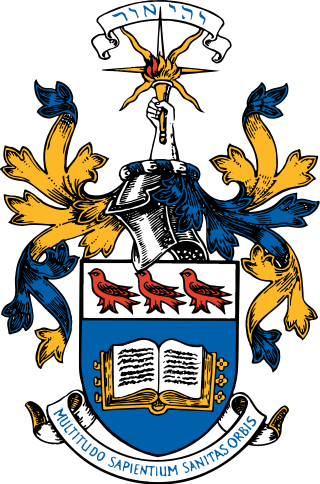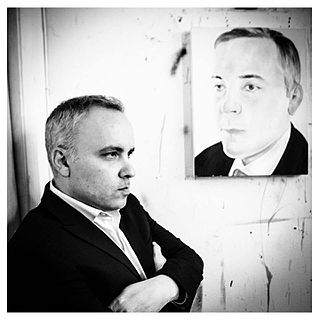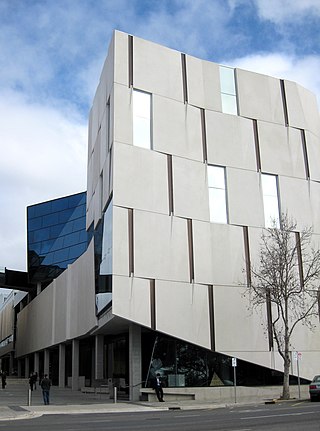
The University of Victoria (UVic) is a public research university located in the municipalities of Oak Bay and Saanich, British Columbia, Canada. Established in 1903 as Victoria College, the institution was initially an affiliated college of McGill University until 1915. From 1921 to 1963, it functioned as an affiliate of the University of British Columbia. In 1963, the institution was reorganized into an independent university.

Katharine Emma Maltwood was a writer and artist on the esoteric and occult. Throughout her childhood, she was reared to be an artist. Her parents were progressive, and they pushed each of their children equally to achieve their potential. In her formative years of art education, her artistic inclinations drew her into the fashionable Arts and Crafts Movement. Maltwood matriculated at the Slade School of Fine Art, University College, London (1896–97). Here, she studied sculpture.

Noah Becker is an American and Canadian artist, writer, publisher of Whitehot Magazine of Contemporary Art, and jazz saxophonist who lives and works in New York City. He is a contributing writer for Art in America Magazine, Canadian Art Magazine and the Huffington Post.
Rona Jean Murray was a Canadian poet.
The Texas Fashion Collection is a non-profit organization dedicated to the preservation and documentation of historically significant fashion. It is operated by the University of North Texas through the College of Visual Arts and Design (CVAD) and housed on the UNT campus in Denton, Texas. The collection is an educational resource for students, researchers and the general public.
Samuel Maclure was a Canadian architect in British Columbia, Canada, from 1890 to 1920. He was born on 11 April 1860 in Sapperton, New Westminster, British Columbia, to John and Martha Maclure. He studied painting at the Spring Garden Institute in Philadelphia from 1884 to 1885, and he was a self-taught architect. He married Margaret Catherine (Daisy) Simpson, an accomplished pianist and portrait painter, on 10 August 1889.

The Samstag Museum of Art, also known as the Samstag Museum, was opened in October 2007 as the Anne & Gordon Samstag Museum of Art, in the Hawke Building of the CityWest campus of the University of South Australia (UniSA). The museum is named in honour of Anne & Gordon Samstag, "two distinguished American benefactors to Australian culture, whose remarkable bequest provides opportunities for Australian artists to study overseas."
Rick Rivet is a Sahtu–Métis painter living in Canada.
Patricia Martin Bates D.F.A. known as Pat Martin Bates is a Canadian artist and educator.
Eric Metcalfe D.F.A. is a Canadian visual and performance artist.

Patricia E. Bovey LL D. FRSA, FCMA has contributed to the Canadian cultural scene as an advocate, museologist, gallery director and curator, professor and as a member of the country’s highest legislative body the Senate. She is an art historian from Manitoba who is a champion of the visual arts.
Jennifer Watson is an Australian artist known for her paintings that combine text and images.
The Victoria Sketch Club is a Canadian arts organization, the oldest Canadian arts group west of Ontario.

Irene Stella Rolph Langdale was an English and Canadian artist. She was commonly referred to as Stella Langdale.
Joe Minter is an American sculptor based in Birmingham, Alabama. His African Village in America, on the southwest edge of Birmingham, is an ever-evolving art environment populated by sculptures he makes from scrap metal and found materials; its theme is recognition of African American history from the first arrivals of captured Africans to the present. Individual pieces from Minter's thirty-year project have been in major exhibitions in the United States and are in the permanent collections of the National Gallery of Art, the Smithsonian American Art Museum, and the Metropolitan Museum of Art, among others.
Stephen Wickham is an Australian photographer, painter and printmaker.
Mary Elizabeth Stormont was a British painter.
W. P. Weston, also known as William Percival (Percy) Weston, was a painter and printmaker, best known for his landscapes of British Columbia, and as a teacher.
Selwyn Peter Webb was a New Zealand art dealer and gallery director. He was a supporter and promoter of art, and particularly contemporary New Zealand art, for over sixty years. Webb's work spanned public art museums, publishing and the founding of the Peter Webb Galleries and Webb's auction house.
Kathryn Bridge is a Canadian writer, curator, archivist and historian who lives in Victoria, B.C. In 1978, she began to work at the British Columbia Archives where from 2012 to 2015 she was a Deputy Director. In 2017, she retired and was honoured as Curator Emerita.









